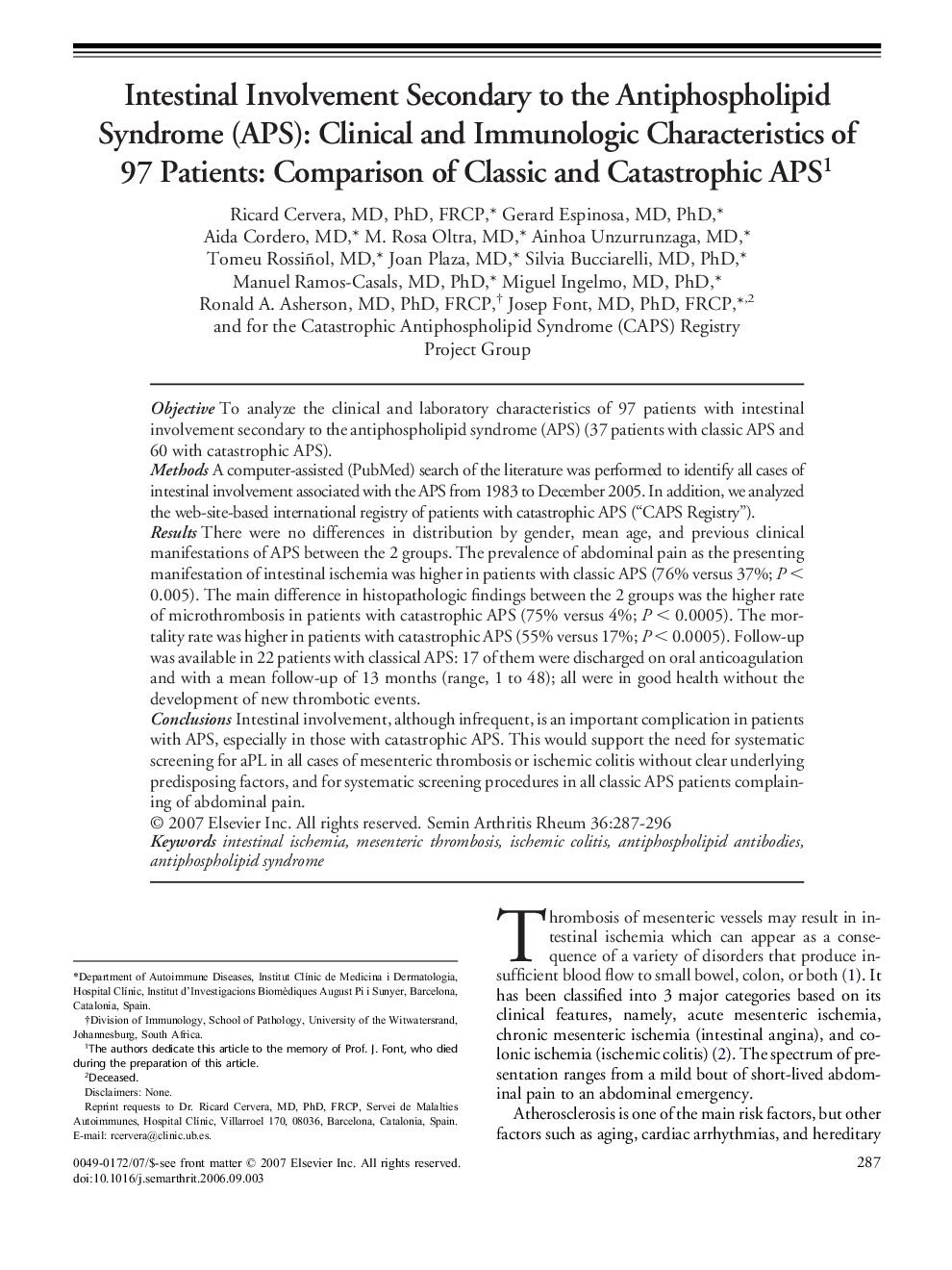| Article ID | Journal | Published Year | Pages | File Type |
|---|---|---|---|---|
| 2771992 | Seminars in Arthritis and Rheumatism | 2007 | 10 Pages |
ObjectiveTo analyze the clinical and laboratory characteristics of 97 patients with intestinal involvement secondary to the antiphospholipid syndrome (APS) (37 patients with classic APS and 60 with catastrophic APS).MethodsA computer-assisted (PubMed) search of the literature was performed to identify all cases of intestinal involvement associated with the APS from 1983 to December 2005. In addition, we analyzed the web-site-based international registry of patients with catastrophic APS (“CAPS Registry”).ResultsThere were no differences in distribution by gender, mean age, and previous clinical manifestations of APS between the 2 groups. The prevalence of abdominal pain as the presenting manifestation of intestinal ischemia was higher in patients with classic APS (76% versus 37%; P < 0.005). The main difference in histopathologic findings between the 2 groups was the higher rate of microthrombosis in patients with catastrophic APS (75% versus 4%; P < 0.0005). The mortality rate was higher in patients with catastrophic APS (55% versus 17%; P < 0.0005). Follow-up was available in 22 patients with classical APS: 17 of them were discharged on oral anticoagulation and with a mean follow-up of 13 months (range, 1 to 48); all were in good health without the development of new thrombotic events.ConclusionsIntestinal involvement, although infrequent, is an important complication in patients with APS, especially in those with catastrophic APS. This would support the need for systematic screening for aPL in all cases of mesenteric thrombosis or ischemic colitis without clear underlying predisposing factors, and for systematic screening procedures in all classic APS patients complaining of abdominal pain.
